Child Experience
Children with congenital hand differences (CHD) will live full and meaningful lives!! Younger children tend to consider the CHD a normal part of their body. Once they are old enough to understand they have a CHD, children are usually satisfied with the way their hand looks and works. They know that their hand difference is a part of them, but not all of them.
As they grow, children with CHD may experience challenges with some activities. This page focuses on some of these challenges and offers suggestions for navigating them.
Developmental milestones are based on the anticipated development of a child born at term to 5 years. They serve to measure brain development by monitoring the age at which children typically start to do different tasks. It is important to clarify that not all children hit these milestones within these time frames or they may skip milestones. There is a lot of variation on how children develop.
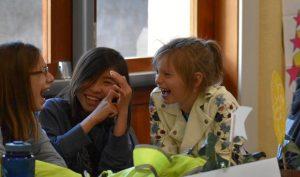
Milestones consist of social/emotional, cognition, language development, gross motor, and fine motor activities. This model focuses on gross and fine motor milestones.
Children with CHD may have trouble with some of the tasks listed in the Developmental Milestones model. Examples include activities requiring 2 hands and those that require typical pinch and grasp. This does not necessarily mean that their brain is not developing as expected. It means that they may need extra time, practice, or different strategies and modifications to help with the activity.
As a parent, give space and time for children to explore and make their milestones on their own. Independence with daily activities such as bathing, dressing, grooming (doing hair, makeup, shaving, and brushing teeth), toileting, and eating are important accomplishments. Work to support your child in these actives instead of doing the tasks for them.
If you feel your child may benefit from targeted support in any area, please talk with your Pediatric Hand Team, they are here to help!
Developmental Milestone Chart
| Age | Gross Motor Skills | Fine Motor Skills |
|---|---|---|
| 0-3 months | – Holds head up – Pushes on ground when lying on tummy – Uncontrolled movement of arms and legs | – Brings hands to mouth – Swings at toys using whole arm – Begins to hold objects in one hand |
| 3-6 months | – Rolls from tummy to back, and back to tummy – Begins to sit unsupported – May bounce when standing supported – Rocks back and forth when on hands and knees | – Holds and shakes toys – Transfers objects between hands – Holds hands together – Reaches for toys with both arms |
| 6-9 months | – Sits without support – Pulls to stand – Crawls – Stands with support | – Begins grasping objects with entire hand – Holds on to objects – Holds objects in both hands – Points and pokes objects with pointer finger – Brings objects to mouth, puts objects into mouth – Squeezes objects |
| 9-12 months | – Transitions to sitting position independently – Pulls to stand – Walks with use of support (from furniture) – Takes a few steps without support – May stand by themselves | – Finger feeding – Turns lots of pages at a time in books – Puts objects into/ takes objects out of containers – Moves objects between hands – Grasps writing tools with fist – Pincer grasp small objects, releases objects when asked |
| 12-18 months | – Walks – May climb stairs – May run – Drags toys while walking | – Stacks towers 2 blocks high – Claps hands together, begins using 2 hands – Waves goodbye – Bangs objects together with both hands – Scribbles – Drinks from cups – Eats with spoon |
| 18-2 years | – Stands on tiptoes – Runs – Climbs up and down furniture – Climbs up and down stairs with help | – Builds towers 3-4 blocks high – Opens simple packages and containers – Turns pages in a book 1 at a time – Draws straight lines and circles – Throws balls overhead – Transitions from first grasp to thumb and fingertip grasp on markers |
| 2 years | – Kicks balls – Stands on tiptoes – Runs – Climbs up and down stairs with help – Climbs up and down furniture by themselves | – Begins to develop hand preference – Molds clay or play dough – Builds towers 9 blocks high – Opens doors/knobs – Picks up small objects with pincer grasp – Completes large puzzles – Opens containers – Strings large beads – Zips and unzips large zippers – Uses utensils to eat – Washes hands by themselves – Folds paper in half |
| 3 years | – Climbs – Runs – Pedals tricycle – Climbs up and down stairs, 1 foot per step | – Copy circles – Cuts paper in half – Copies lines and shapes – Manages large buttons – Holds sippy cup in one hand – Sorts objects |
| 4 years | – Hops on one foot – Catches balls – Balances on one foot for ~2 seconds | – Copies more complex shapes – Touches the tip of each finger to thumb – Cuts large circles with scissors – Moves paper while cutting – Uses fork with skilled grasp – Displays hand dominance – Dresses and undresses independently – Pours liquid from one container to another |
| 5 years | – Stands on one foot for ~10+ seconds – Hops, begins to skip – Can complete a somersault – Swings or climbs | – Begins to use knife – Skilled grip on pencil – Begins to print name – Cuts a circle – Ties shoes |
*Table modified from:
Center for Disease Control and Prevention. “Developmental Milestones.” Centers for Disease Control and Prevention. Last modified April 4, 2019.
Fenstermacher, Karen, and Barbara T. Hudson. Practice Guidelines for Family Nurse Practitioners, 4th ed. Philadelphia: W B Saunders Company, 2016.
Greutman, Heather. “Typical Fine Motor Developmental Milestones for Ages 0-6.” Growing Hands-On Kids. Last modified June 15, 2018.
“If there is a will, there is away.”
There will be a way your child can complete the activities they need to do and want to do.
There are many solutions!
Children are exceptionally creative and often discover their own strategies.
Potential solutions include:
- Adaptive strategies or modifications
- Adaptive technology such as custom tools, or prostheses, or orthoses
- Treatment such as therapy or surgery
- or a combination of all of the above!
There are hundreds of internet social media accounts and YouTube videos of children, teens, and adults engaging in one-handed / no-handed activities. Try searching for “one-handed cooking” or “how to put up hair with one arm” or “how to fish with one hand” – you are likely to find multiple videos with various strategies. Modifications may require additional steps (e.g. switching hands), or the use of other body parts like elbows, chest, legs, knees, and feet. Some videos feature people with amputations or individuals with strokes – the condition or diagnosis is not important if the strategies are helpful.
Many one-handed products may replace common two-handed products. Examples include one-handed nail clippers, toothpaste dispensers, rocker knives, non-slip mats for stirring bowls, one-handed salt and pepper grinders, one-handed keyboards and envelope openers. You can find these products via web searches or on medical supply websites. Alternatively, you can improvise or create these products in your home. The difficulty with one-handed products is they are not common in all households. It is not feasible to purchase/build all new tools and to carry the products around. That being said, if these tools are beneficial for your child, by all means, try them out!
Bring your challenges and ideas to your Pediatric Hand Team; they can provide supports, ideas, and interventions.
Hands are often used socially: for hand-holding, hugging, shaking hands, high fives, playing, eating, and gesturing while talking. They are a visible part of the body, and hand differences are often noticed by others. The first time a person ever sees a CHD may be when they meet your child. However, for your child, managing and navigating interactions with other people are daily tasks.
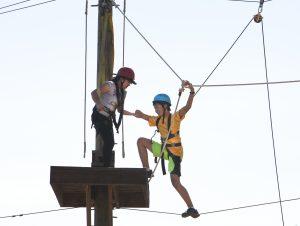
Stigma Theory was developed by Erving Goffman in 1963, to understand the social experience of an individual with a physical difference (“non-normal feature”). Below, we review features of this theory.
Stigma is a negative assumption that people may make about people with physical differences.
People are stigmatized when assumptions are made about their ability to do a specific activity. An example is “Since that person does not have an arm, they are unable to water-ski.” These assumptions then become social limitations. A “social limitation” is a social barrier preventing others from doing an activity. In this example, the social limitation is denying a child with a CHD the opportunity to try water-skiing.
When someone is stigmatized because of a CHD, they may become insecure and socially anxious. They may associate all of their insecurities (e.g. “I can’t sing” or “I’m bad at math“) with their CHD.
Children with a CHD may attempt to ‘pass as normal’ by hiding their hand as a coping strategy. Children may believe these stigmatized assumptions made of them. They may have thoughts like “I can’t ride a horse; I only have one arm” or “I could never work as a flight attendant; I only have one hand.” These thoughts may limit them from trying the activity. This is called Internalized ableism.
Eventually, the person experiencing stigma will develop acceptance of their condition. They can broaden their own understanding of what “normal” is. They can come to the understanding that physical differences are in fact “normal.” Then, the person with physical differences can teach others in their communities to embrace this expanded definition of “normal.” By educating others, stigma is combatted and eradicated.
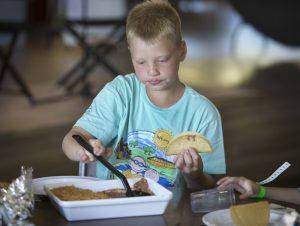
It takes a considerable amount of emotional effort for a person with physical differences to expand the definition of “normal” and teaching others to share this perspective. People who do not have physical differences are often unfamiliar with the experience of someone with a CHD. Disability and difference are social constructs, developed and maintained by a society in which assumptions are made that people with disabilities are different, or limited, or not part of that society. Stigma can be eradicated by education about the experience and abilities of people with physical differences.
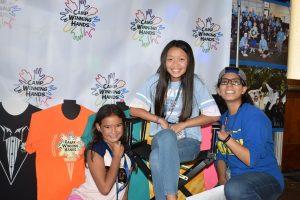
Children with CHD tend to undergo self-awareness and self-acceptance processes related to their social and emotional development. The following anticipatory guidance may help you anticipate and understand social and emotional concepts that your child may experience. Keep in mind every child is unique; your child may or may not experience components listed or may experience them in a different order.
Children may not share directly with parents what they are feeling. This might be because they have difficulty putting their thoughts and emotions into words. We encourage you to help your child vocalize and express thoughts through art, writing, conversations, and movement or dance activities. Help them find outlets that give them an unfiltered platform to convey their thoughts and feelings.
Children with CHD may be embarrassed, frustrated, or ashamed. Help create a safe space by having conversations with your child about their CHD. This lets them know they can talk (or share their artwork, dance routine, or writing) with you, siblings, relatives, a friend, or someone they trust. It may be beneficial for parents to share their own difficulties from their childhood as a way to relate. This helps your child feel supported, valued, and not alone.
Additionally, there is a list of children’s books on the Resource Page. Reading these types of books may help facilitate conversations about their experience.
If you have concerns, please talk with your Pediatric Hand Team, they are here to support you.
Social and Emotional Anticipatory Guidance for Parents of Children with a CHD
Social-Emotional Development Regarding CHD (Congenital Hand Difference):
| Age Group | Social-Emotional Development and Concerns |
|---|---|
| 0-3 years | – Begins studying their hands – Puts their hands in their mouth, and explores their environment with their hands – Compares their hands to others |
| 3-5 years | – Develops an awareness of their hand difference – May begin to ask reflective questions: “Why does my hand look different than yours?” – Maintains self-esteem – Listens to explanations of parents and others regarding CHD |
| 6-8 years | – Transitions to explaining their CHD – Peers notice CHD, may ask questions – Child realizes that CHD can’t be “fixed” and may enter a crisis period with this realization – May be sensitive to peer reactions and may respond in anger or distress to non-threatening peer comments or looks/stares – Lacks problem-solving skills to cope – Teasing and bullying may begin – Self-esteem and self-worth is threatened |
| 9-12 years | – Peers notice CHD and may make negative comments – Child may begin to feel self-conscious about their hand – Self-esteem and self-worth may begin to decrease |
| 13-16 years | – With the onset of puberty, social relationships become very important; teens may transition to new schools and meet many new peers. Attention is focused on physical appearance and differences may be considered negative by peers – Teen has difficulty regulating self-esteem and coping with their CHD – May wish they could be “normal” or “fit in” and their CHD may be a reminder they are different – May anticipate that peers will not like them – May hide CHD in long-sleeved shirts, and may wear hoods up on sweatshirts, long hair in front of face, and stand with head lowered and shoulders rounded – May hide CHD behind back or under the table for social events and photographs – May be hesitant and/or anxious to engage in activities with new peers, such as new sports teams, dance classes, or camps – May have anxieties with CHD around dating – Self-esteem and self-worth may be lowered |
| 16+ years | – Begins the journey of self-acceptance – Develops acceptance that their hand is an aspect of them, and not all of them – Anticipates that peers will like them regardless of the CHD – Engages in activities with new peers and navigates new friendships – Feels more comfortable having their hand visible, no longer hiding behind back or in long-sleeves for new peer interactions and photographs – Develops a comfortable, personalized response to “what happened to your hand” – Self-esteem and self-worth improve |
*Anticipatory Guidance Table Modified from:
Bradbury, E. (2007). The psychological and social impact of disfigurement to the hand in children and adolescents. Developmental Neurorehabilitation, 10(2), 143-148. doi:10.1080/17518420701281122
Gingras, G., Mongeau, M., Moreault, P., Dupuis, M., Hebert, B., & Corriveau, C. (1964). Congenital anomalies of the limbs: II pyscological and educational aspects. Canada. Med. Ass. J, 91, 115-119.
Children may use a variety of coping mechanisms to process stigma and stress related to their CHD.
They may cope by engaging, which means focusing on solving problems related to their CHD, or by disengaging, which means avoiding issues related to their CHD, or blaming them on others.
Engagement and Disengagement Coping Behaviors
Engagement Coping
- Use of humor
- Self-acceptance
- Seeking support from others
- Educating others
- Support programs
- Developing supportive friendships and supportive family relationships
- Remaining calm
- Assertively confronting negative reactions
Disengagement Coping
- Avoidance or escape of social interactions
- Concealment of the hand
- Pretending CHD does not exist
- Anger or frustration
- Blame others or events
- Wishful thinking: “I wish I was…”
Children who use engagement coping behaviors tend to have less anxiety and higher self-esteem.
Children who cope by disengaging are more likely to have anxiety, low self-esteem, depression, and psychological distress.
We recommend strengthening engagement coping skills and behaviors with your child. Examples include developing social scripts with your child for introducing or disclosing the CHD, and for managing the reactions of other people. Practice these scripts with your child, so they feel comfortable managing these conversations on their own.
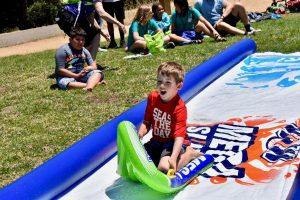
Help your child to develop a positive self-concept and pride in their CHD. This is done by reinforcing activities or skills they are “good at,” and encouraging them to try and experience success with moderately challenging activities (e.g. climbing a rock wall). We strongly recommend summer camps for children with limb differences (Camp Winning Hands). Camps provide freedom from stigma while trying new activities, and a community of people who understand the experience of growing up with CHD.
We all have anxieties and a tendency to stigmatize others who appear different from us. It is important for parents to be mindful not to project their own anxieties or stigmas onto their child. Parents can let their child take the lead and support them as needed. If you have concerns about your child and notice differences in your child’s behavior, we encourage you to talk with your Pediatric Hand Team. They have a variety of supports, strategies, and services for your child and your family.
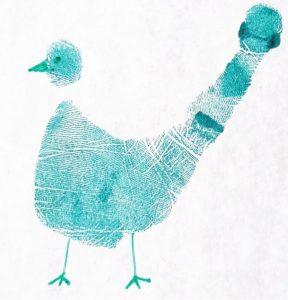
Congenital hand differences most often do not have definitive explanation. This makes answering “What happened to your hand?” a sometimes challenging question to answer. Children use their hands for many social activities, like hand clap games, holding hands, hugging, gesturing, eating, carrying things, playing games, and writing; which means hands that appear different then expected are often noticed by others.
STEPS and RYR are communication tools developed by the Phoenix Burn Society to help empower children to develop a response to “What happened to your hand?” questions and staring. As your child begins the transition to pre-school and kindergarten, or if you child is feeling anxious about people asking questions and/or staring, try out STEPS and RYR.
STEPS*
STEPS is a tool you can use to help your child build confidence and teach others how to interact with them. It may take practice for it to become part of your child’s daily life.
The principle behind STEPS is that your child can control the image they choose to present to others, and the conversation they have with others about their CHD.
Try practicing STEPS with your child, or have your child practice in front of a mirror.
S = Self Talk – Prepare a list of positive messages to tell yourself, for example:
- I love and accept myself for the way I am
- My hand difference is a part of me but not all of me
- I am beautiful
- I meet people easily and they want to be my friend
T = Tone of voice – Be mindful of they way you answer questions,
- Friendly
- Warm
- Enthusiastic
E = Eye Contact
- Look people in the eye, even if only for a few seconds
P = Posture
- Head raised
- Shoulders back
- Rib cage lifted
S = Smile
- Confident
- Approachable
Rehearse Your Response (RYR)*
RYR is a tool your child can use to navigate conversations with people who are new to them.
Sometimes children want to tell their whole story and do not mind attention and questions. Other times children want the conversation to end quickly.
To help speed up the conversation, your child can learn (by practicing with you) a 3-sentence response to the question “What happened to your hand?” This 3-sentence response can be practiced with STEPS (above) until your child feels comfortable and confident.
Remember to help your child understand that they are in control of the conversation, and when they no longer want to answer questions they can say “That’s all I want to talk about, thank you for understanding”.
Examples of a 3 sentence response to the question: “What happened to your hand?”
- Address the nature of the condition i.e “I was born this way”, “It might look different than you expect”, “I had surgery when I was a baby”. Another way to address the nature of the condition is to use humor by saying things like “It got bitten off by a shark”, “I was wrestling a bear” or “An alligator tried to steal my cookies.” Help your child develop whatever response best fits their personality.
- Mention how they are doing now, e.g. “I am going to have surgery” or “I can play basketball”
- End the conversation: “Thank you for asking”.
Examples of 3 sentence responses include:
- “I was born like this and I had a surgery when I was a baby. I can do everything I need to, it might look a little different than you might expect. Thank you for asking.”
- “I was born this way, I can do baton and play volleyball. Thank you for asking.”
When someone continues to ask your child questions and your child does not want to answer, help empower them to say something like: “That is all I want to talk about right now, thank you for understanding”, then smile and physically leave the conversation.
Encourage your child to practice in front of a mirror or with siblings or friends, until they feel comfortable and prepared.
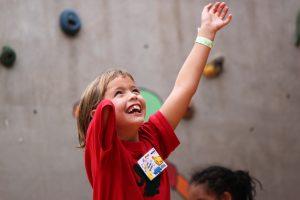
Sometimes people are unfamiliar with a CHD and have a difficult time understanding it. They don’t know how to interact with someone with a CHD. They may struggle with the “right” words to use and may use terms that feel offensive to people with a hand difference.
Your child can respond with comments such as “Let’s try that again” or “How about we try another word” or your child can say: “The words I like to use are.. (limb difference, small hand, nubbin etc.), I would appreciate if you used these terms too.”
We encourage you to explore how your child wants to talk about their CHD. If you have concerns please talk with your Pediatric Hand Team, they are here to help!
Staring*
Yes, looking different draws attention. Most people look out of curiosity or concern. Very few stare to be rude.
We may not be able to change people’s reactions to seeing someone with a CHD. But we can help children manage their reactions to staring.
- You and your child are in control of the interaction. Use the STEPS and RYR tools to navigate social interactions and help teach others how to interact with your child.
- If your child sees someone staring at them they can use their STEPS tools and confidently say, “Hi, how are you?” or any other form of small talk. The person staring will usually respond in a friendly way and stop staring. By smiling and speaking to someone who is staring, your child takes control of the interaction, and potentially teaches the staring person an important lesson: a person with a CHD is a normal person, who happens to have CHD.
*Material copyright Phoenix Society for Burn Survivors. Adapted for CHD. Used with permission.
If you find that social interactions have escalated to teasing or bullying behaviors please talk with the Pediatric Hand Team, or the professionals in the community where the bullying or teasing behaviors are occurring.
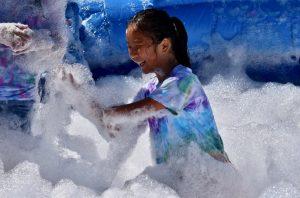
A “social script” is a way people learn to navigate everyday social interactions. Examples include riding a bus, purchasing groceries, attending a family dinner, being interviewed for a job, and going to a doctor’s appointment. Each of these events has its own set of social scripts. The things we say at a family dinner are different than what we say at a grocery store check out line.
The challenge for children with CHD is that the general population is unfamiliar with CHD and may not know the social scripts to navigate the conversation. The conversation can be awkward and full of questions. People often don’t know how to shake your child’s hand, or if they should offer help. They may need direction in these tasks.
As a parent of a child with a CHD, you may initially navigate questions from others and teach others the social scripts for interacting with your child. Eventually, this conversation will transition to the child, usually when they start attending school.
Remember that your child may be the first person an another person has seen with a CHD. The other person’s stares or questions are usually their expressions of interest and desire to understand. They are not typically trying to me mean or rude.
You and your child are in control of the conversation, you and your child have the power to share as much or as little as you want, and can end the conversation at any point. We recommended checking out Managing Conversations (tab above) to develop a response to “What happened to your hand?” Practice these conversations with your child until he/she feels confident and prepared to manage this conversation on his/her own.
Writing a book about their CHD helps your child develop and manage conversations. The book can be shared, or may remain private; the act of writing it will help you and your child explore how you want to navigate conversations best and teach social scripts to others. You can write this book from scratch, copy and personalize a sample book, or use a template. See below for examples.
Meet Rosie is a sample book that Sarah Tuberty, OTD, OTR/L an adult with a limb difference, developed based on how she introduces herself to her peers. Feel free to download this and share it with your child, or adapt it to meet your family’s needs.
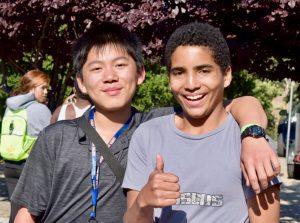
You can download and tailor it to your child’s needs and interests. The document text can be edited and your child can draw your own pictures, or you and your child can choose photographs to put in the spaces above the text. The overall messages of these book are “My limb difference is a part of me, but not all of me. I can do all of the things I need to do and want to do, I may do some things differently from what you may expect.”
Your child can create their own book with your help. Think of “What do you want others to know about you?” and “How do you wish others would treat you?” when drafting content.
